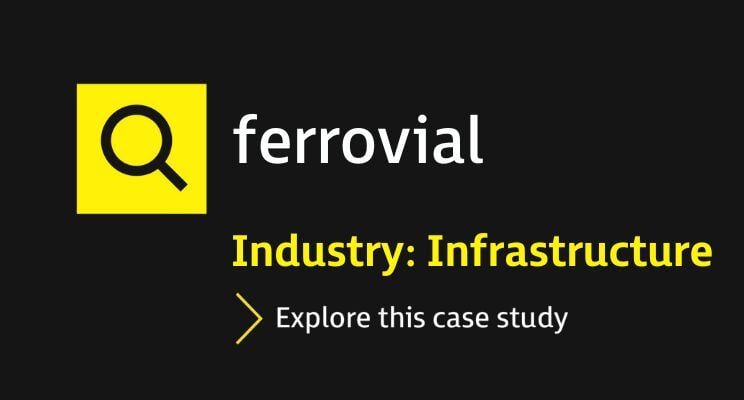Case study: boosting productivity by 75% after moving JHA reports to FYLD
The challenge
Ferrovial, global operator of sustainable infrastructure, had the task of widening one of the most congested stretches of highway in Texas, on a project of works totalling $2.6 billion.
Typical of the industry, most of the daily job hazard analysis (JHA) reports were completed manually. The inefficient paper-based process offered little visibility for on and off-site managers into the safety and operational issues across the 12 mile work site.
Language barriers further complicated sharing of information. Subcontractors, who made up 80% of the workforce on the project, mostly spoke Spanish as their first language while the on and off- site managers primarily spoke English.
Expectations
Ferrovial is an industry leader in work site safety standards and partnered with FYLD to raise its safety outcomes whilst concurrently using the platform to accelerate project delivery through:
- Replacing the “check box” approach to completing daily JHA forms with live, narrated video to improve quality and quantity of JHA reports delivered.
- Enhancing safety assessments with immediate AI-powered review of each JHA video, identifying potential hazards and suggesting control options for hazard remediation.
- Providing on and off-site personnel instant access to the JHA report videos and connected
- AI-enhanced safety assessments, enabling them to better prioritise issues and take faster action were most needed. Importantly, these JHA’s gave remote operational leaders the ability to understand what was happening on site, and where they should intervene to reduce work stoppages.
- Automatic translation of safety videos and notes to expedite communication for rapid resolution of potential safety hazards or job blockers.
The Solution
Ferrovial rolled FYLD out to 85% of the project workers, including subcontractors, in
under two months. FYLD was integrated into Ferrovial’s on-boarding process for new
subcontractors and employees, for a total of 1,000 users. With broad usage across the
project workforce, Ferrovial experienced:
- 75% reduction in time spent creating JHA reports, resulting in greater productivity.
- Improved subcontractor compliance in submitting daily JHA reports. The lowest performer
had a 16% JHA submission rate prior to FYLD, which then lifted to 100% compliance using FYLD. - Superintendents and safety managers saved significant time with complete visibility into the
current safety and productivity issues across the entire work site via the FYLD dashboard. - Superintendents were empowered to make data-led decisions about where to focus their
time, and with hours freed from driving along the work site to get verbal updates they had
more time to expedite the removal of job blockers and resolution of safety hazards. - Regular submission of end of shift wrap ups and evidencing JHA videos enabled efficient
hand overs to the next crew and provided defense against potential costly liabilities. - Increased safety awareness and active engagement by workers narrating videos and opening
safety discussions with other crew members to submit safety observations and equipment
inspections.
Proven impacts

Improved productivity
- Project finished three months early with over 1,000 JHA, safety observations, and equipment inspections videos uploaded to the FYLD platform in the final four weeks.
- Superintendents and safety managers reduced time spent on paperwork and travel along work sites, giving them more hours each day to focus on operations and safety.

Improved safety outcomes and culture
- Project’s Recordable Incident Rate equalled 0.73 per 100 full-time workers, across 13.1million man hours and over 19,000 lane closures; 73% below average construction incident rate in the United States.
- In 2022, a RIR of 0.53 was achieved – the year FYLD was implemented across the project. An insurance premium reduction is now being explored.
- Elevated safety culture engagement throughout the organisation with nearly 8,169 JHA videos made, reviewed over 22,000 by supervisors.

Quantifiable ROI
- Rapid return on investment was achieved, with an estimated $240,000/year productivity benefit due to one single feature – the JHAs being completed at pace.
- Further significant reduction in project costs by enabling Ferrovial to complete the highway improvement three months ahead of schedule, along with upside revenue generation through toll lanes being opened well ahead of schedule.
- Project cements Ferrovial’s quality and project management reputation with local regulator Txdot, placing it strongly for bids on future toll road projects.






